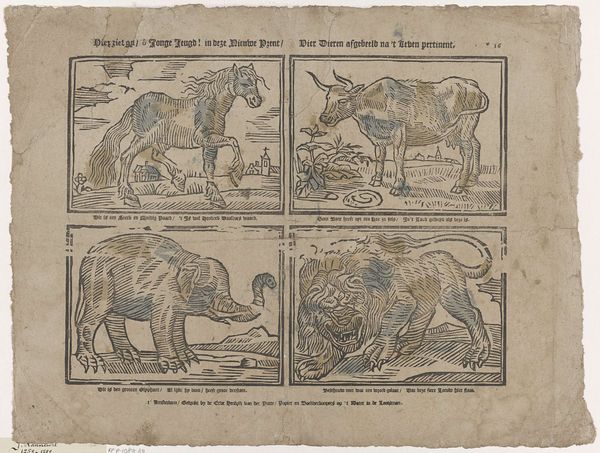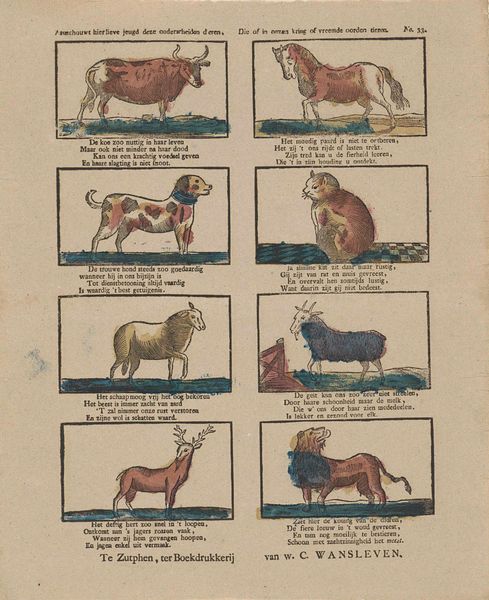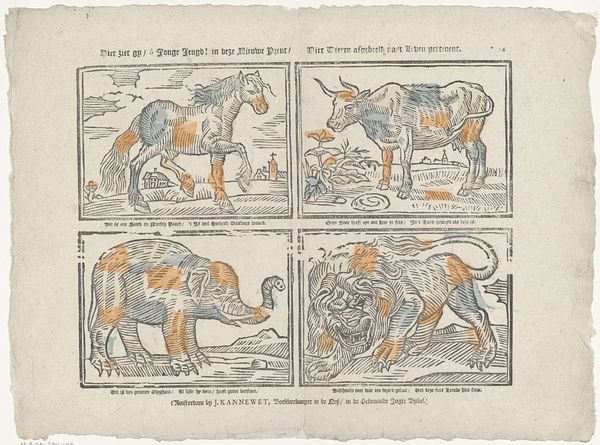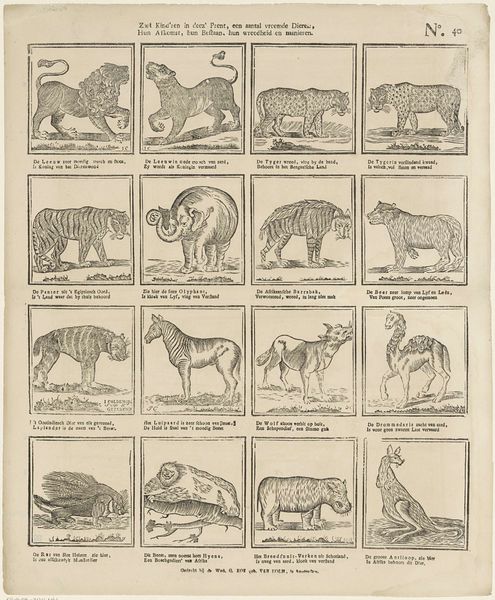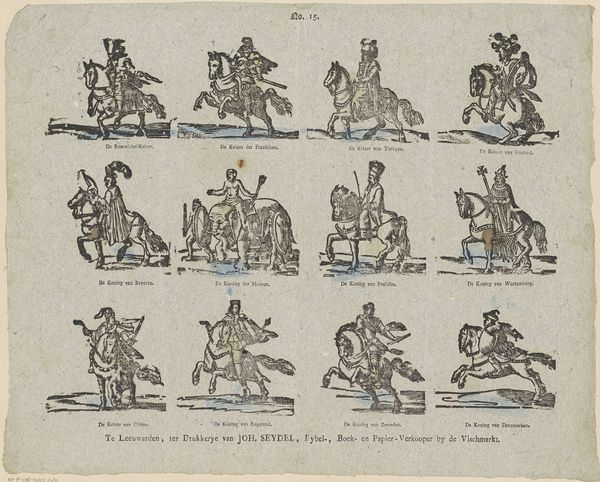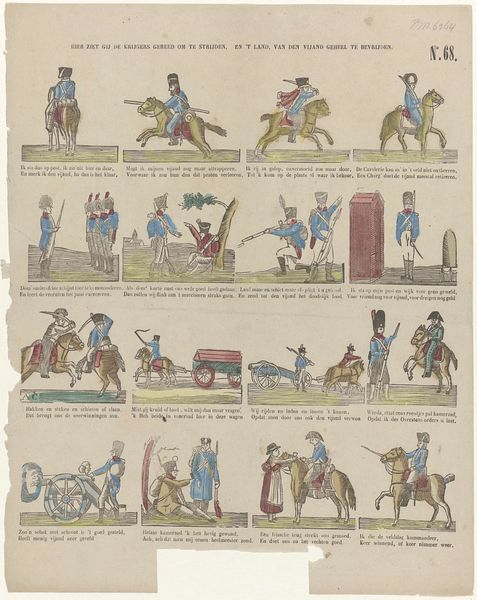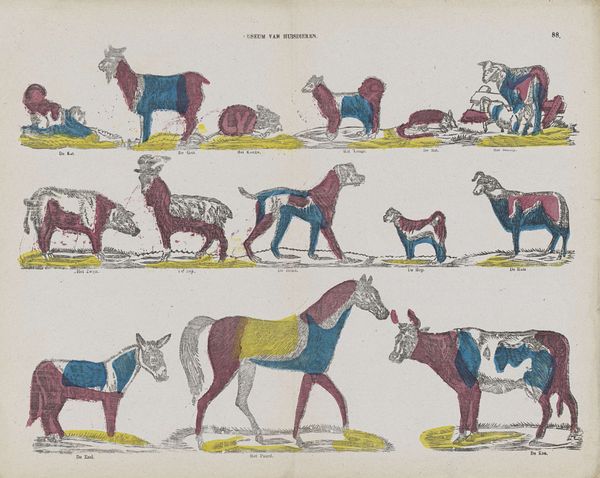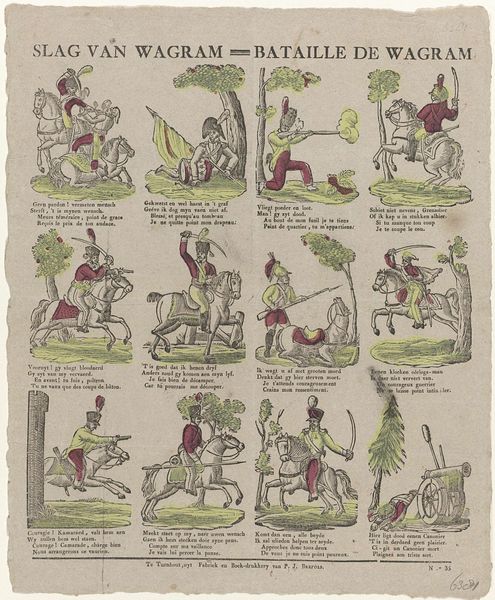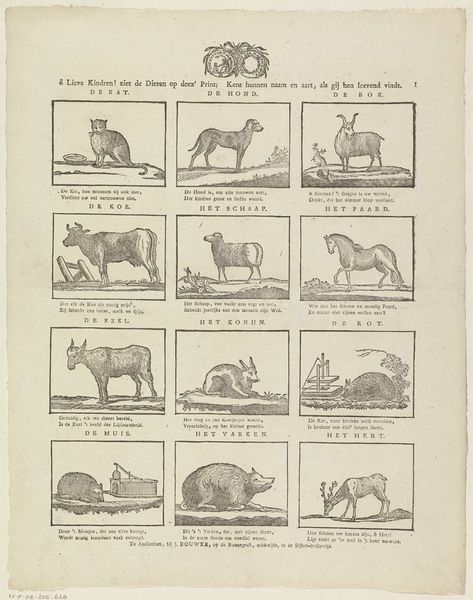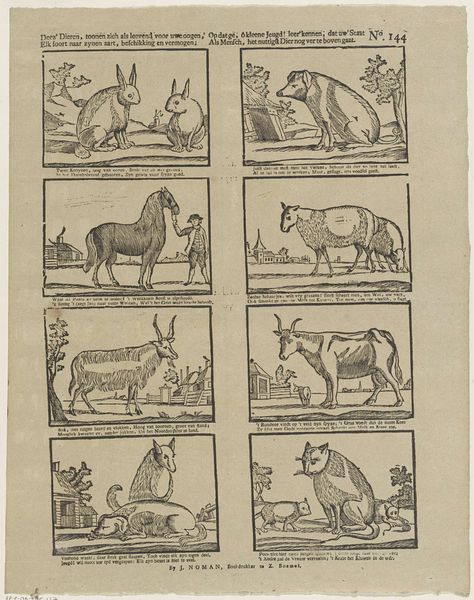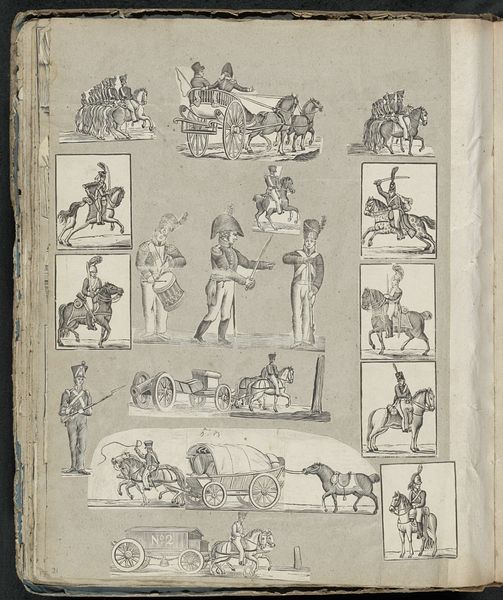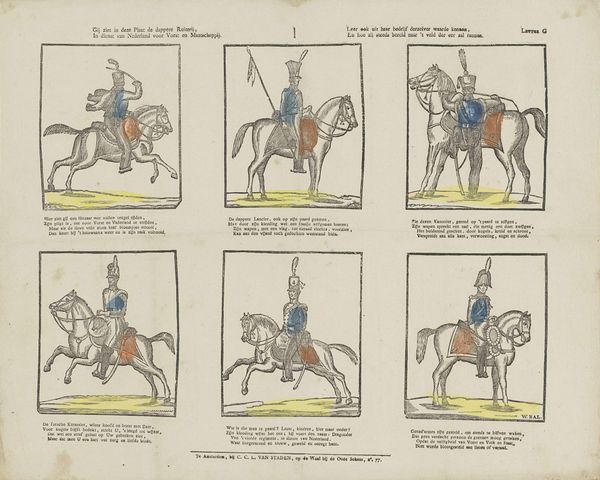
#
toned paper
#
animal
# print
#
caricature
#
figuration
#
watercolour illustration
#
genre-painting
Dimensions: height 324 mm, width 383 mm
Copyright: Rijks Museum: Open Domain
Curator: Oh, this is curious! It is titled "Dieren" which means "Animals", a print that resides here at the Rijksmuseum, likely created sometime between 1827 and 1894 by M. Hemeleers-van Houter. It's certainly got an odd quality. Editor: Right? My first impression is… disjointed. Each animal looks like a bizarre collage, slapped together with seemingly random swaths of color. It's like someone tried to build an animal encyclopedia using spare parts and a very limited color palette. Curator: Interesting take. The choice to render these animals almost as caricatures, rather than realistic depictions, tells us something about cultural perceptions and perhaps the very purpose of the artwork. Notice how each animal is accompanied by a descriptive text underneath. Editor: Oh, totally. So it is an encyclopedia. The texts underneath definitely give off satirical vibes—almost like poking fun at the animals and their perceived traits, through stereotypes of society at the time? Like those patches of red, white, and blue under each animal. Political statements or playful splashes of ink? Curator: Undoubtedly! We can decode each animal to understand not only its visual representation but its implied social role, tapping into established social dynamics and popular understandings. Perhaps some nationalism is baked into the work somehow, with the application of blue, red, and white hues in sections across all animals, irrespective of their origin. The French flag? Editor: It’s definitely making me rethink the role of these 'natural history' illustrations—maybe they were never truly about pure observation, about classification or nature. They were reflections of us all along. They’re absurd, silly, and pointed—a mirror to society itself. Curator: I find the use of the toned paper and the watercolor illustration especially insightful as they point towards a historical context and provide this peculiar almost ghostly visual tone. Editor: Agreed, it’s a surprisingly effective way of giving such light-hearted, almost silly drawings a peculiar sense of history. Well, I came here expecting to look at animals, and ended up staring straight into the looking glass of humanity. Curator: Yes! It demonstrates how historical artwork prompts a profound reflection on continuity of both image and value!
Comments
No comments
Be the first to comment and join the conversation on the ultimate creative platform.
